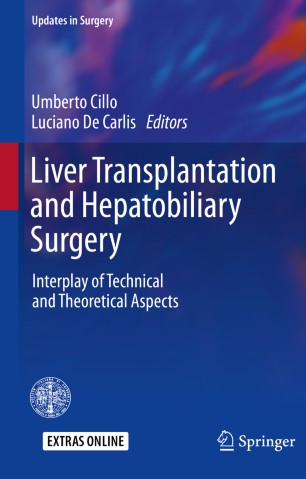Liver Transplantation and Hepatobiliary Surgery: Interplay of Technical and Theoretical Aspects 2019
دانلود کتاب پزشکی پیوند کبد و جراحی کبد صفراوی: تأثیر متقابل جنبه های فنی و نظری
| نویسنده |
Luciano De Carlis, Umberto Cillo |
|---|
| تعداد صفحهها |
233 |
|---|---|
| نوع فایل |
|
| حجم |
8 Mb |
| سال انتشار |
2019 |
89,000 تومان
در گذشته، برداشتن کبد و پیوند کبد توسط تیمهای جراحی مختلف انجام میشد که تعامل کمی بین این دو وجود نداشت. با این حال، تکامل به سمت عملیات های پیچیده تر مستلزم تعامل شدید فزاینده ای بین این تکنیک های جراحی است: پیوند کبد تقسیم شده و پیوند کبد از اهداکننده زنده در جامعه پیوند رایج شده است، با استفاده از توموگرافی Coinaud به شیوه ای بسیار پیچیده، در حالی که برداشتن پورتال و شریانی. تبدیل مجدد یک روش ضروری برای درمان تومورهای Clatskin است که به ناف نفوذ می کنند.
این کتاب یک نمای کلی از پیوندهای بین پیوند کبد و جراحی کبد صفراوی ارائه می دهد. این بر روی تکنیکهای خارج از محل برای برداشتن تومورها در محل تلاقی فوق کبدی، با یا بدون بازسازی وریدی، و بر برش کلی عروق کبد با کمک بای پس وریدی تمرکز دارد که باید یک گزینه جراحی برای مراکز ارجاع در جراحی کبد صفراوی و پانکراس باشد. با در نظر گرفتن توسعه جراحی کبد کم تهاجمی، خوانندگان را با دیدگاههای جدید مختلفی مانند: تکنیکهای خروج عروقی با یا بدون گردش خون خارج از بدن، اثرات همودینامیک و درسهای آموختهشده از جراحی پیوند کبد، جزئیات فنی در مورد پیوند کودکان و آن آشنا میکند. نقش آموزنده در جراحی مدرن مجاری صفراوی
In the past, liver resections and liver transplantations were performed by different surgical teams, with very little interplay between the two. However, the evolution toward more complex operations called for an increasingly intense interaction between these surgical techniques: split liver and living donor liver transplantation have become popular in the transplant community, utilizing the Coinaud segmental anatomy in a very sophisticated way, while portal and arterial resection and reconstruction have become indispensable methods for treating Klatskin tumors infiltrating the hepatic hilum.
This book offers a complete overview of the connections between liver transplantation and hepatobiliary surgery. It focuses on ex situ techniques for resection of tumors at the suprahepatic confluence, with or without venous reconstruction, and on total vascular exclusion of the liver with the aid of a venovenous bypass that should be a surgical option for referral centers in hepatopancreatobiliary surgery. By taking into consideration the development of minimally invasive liver surgery, it will introduce readers to a variety of new perspectives such as: vascular exclusion techniques with or without extracorporeal circulation, hemodynamic implications and lessons learned from liver transplant surgery, and technical details on pediatric transplantation and its informative role in modern biliary tract surgery.




